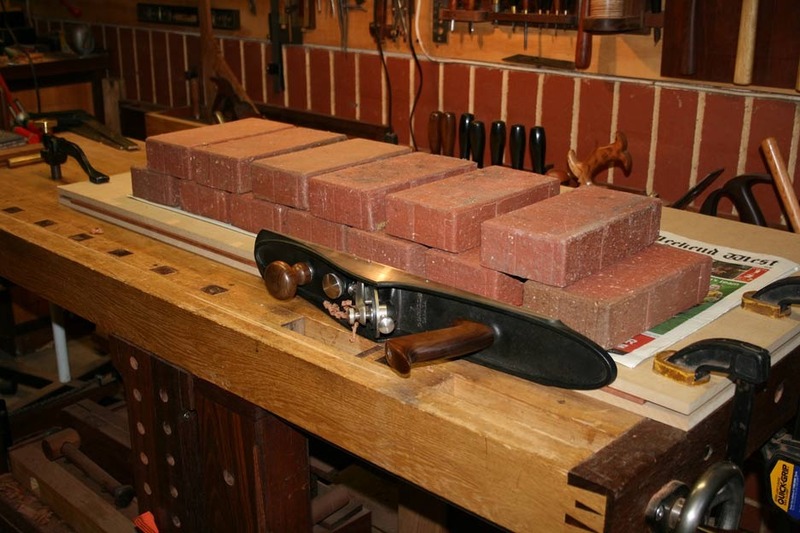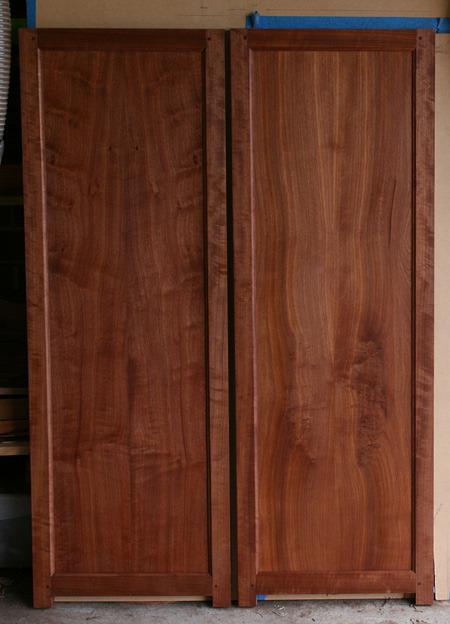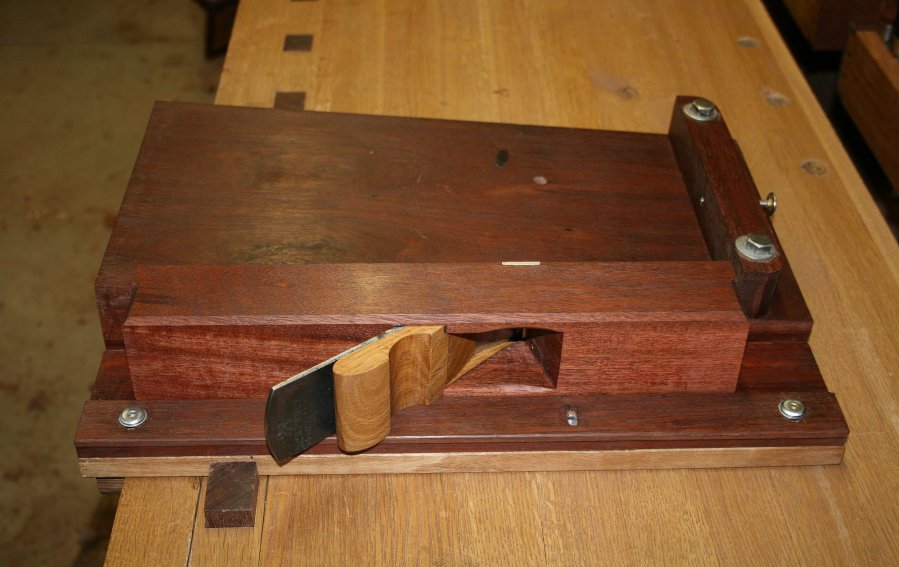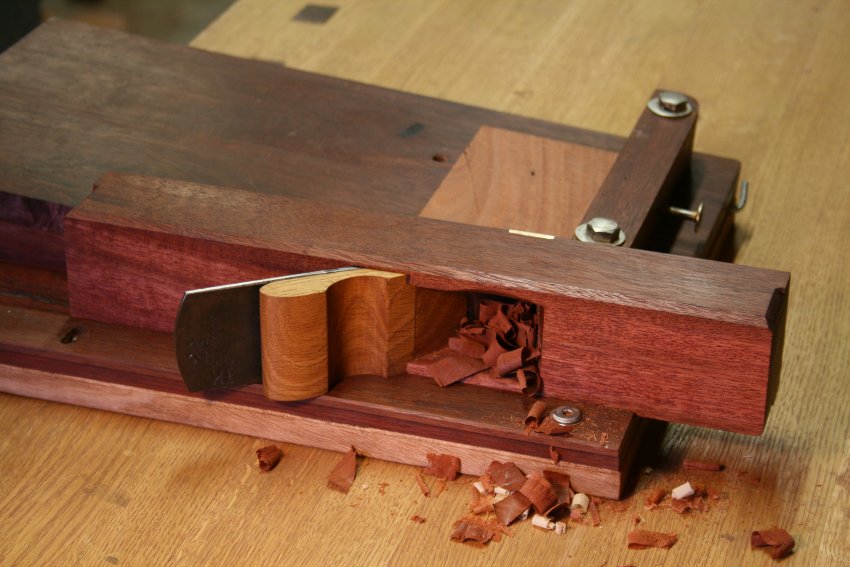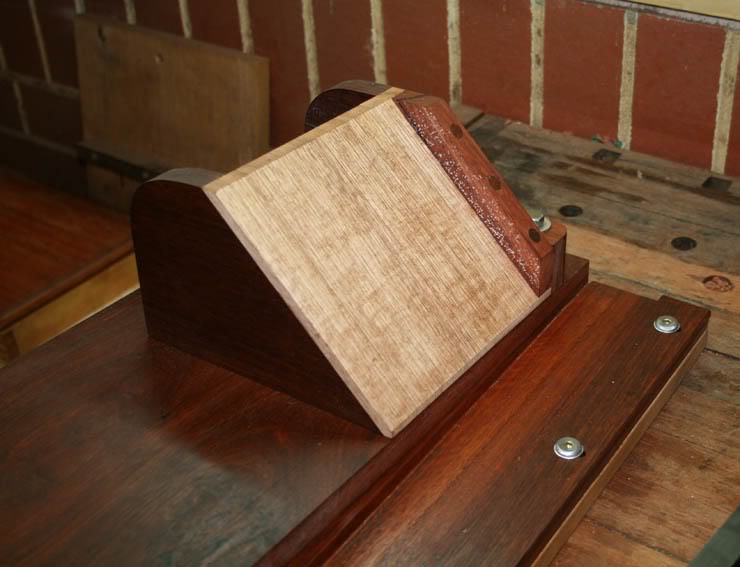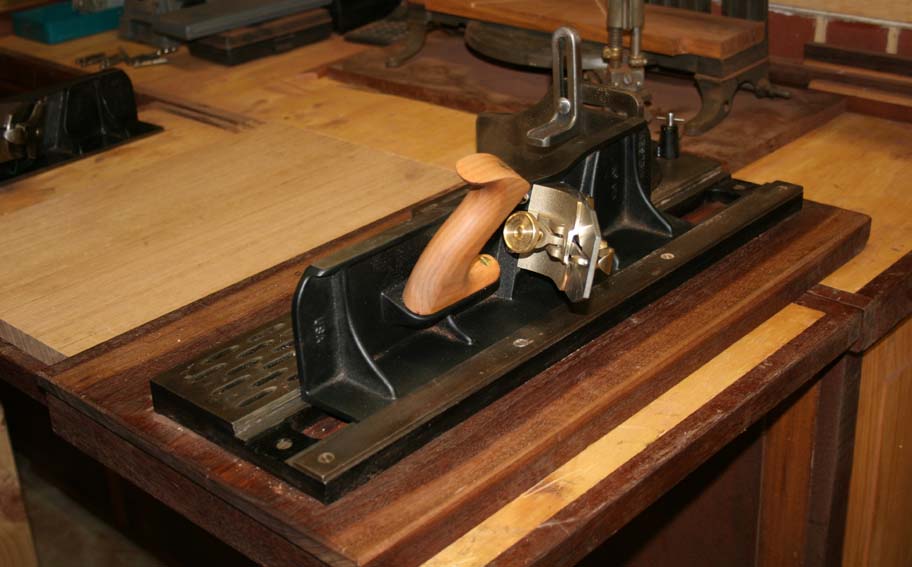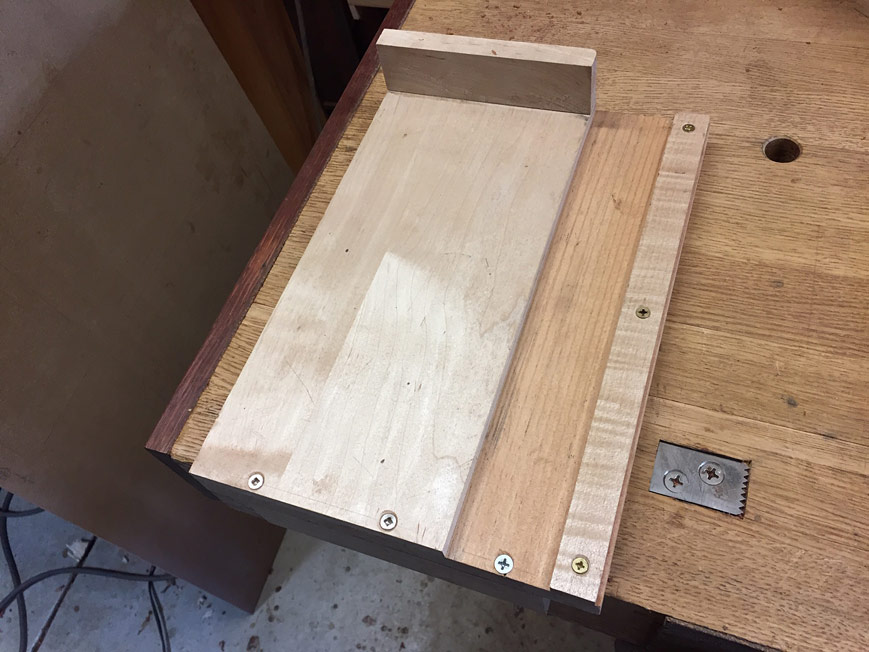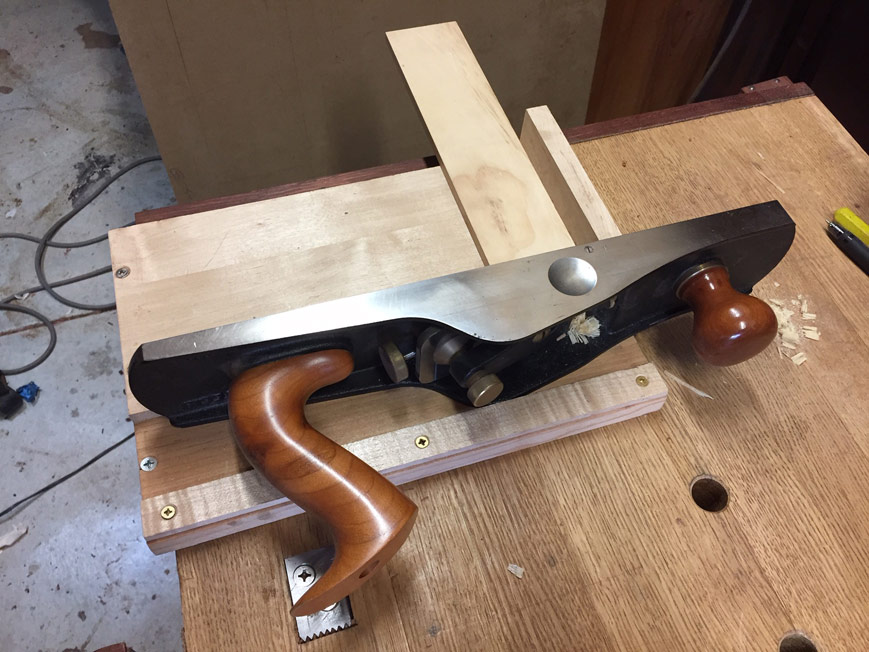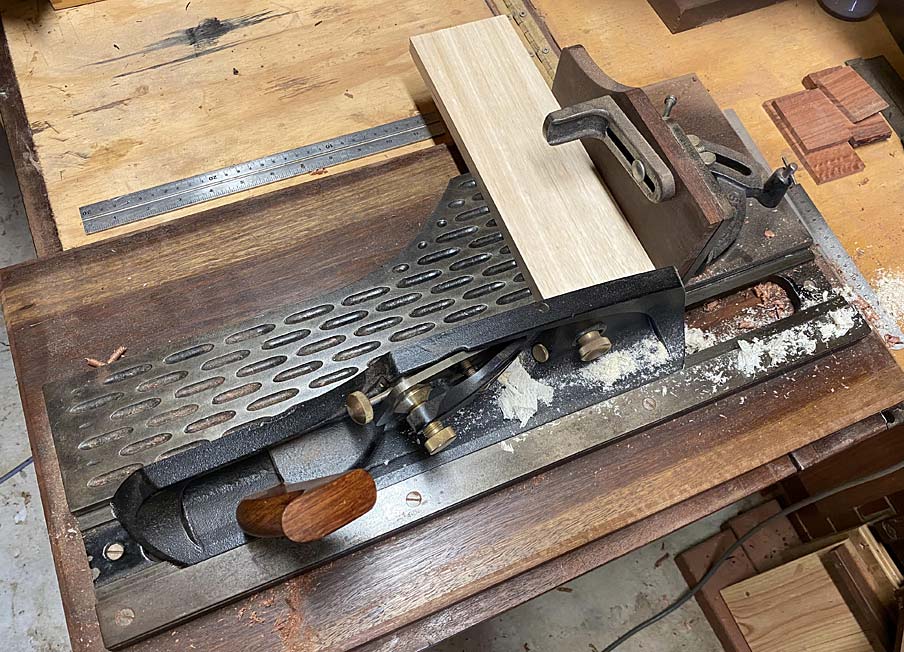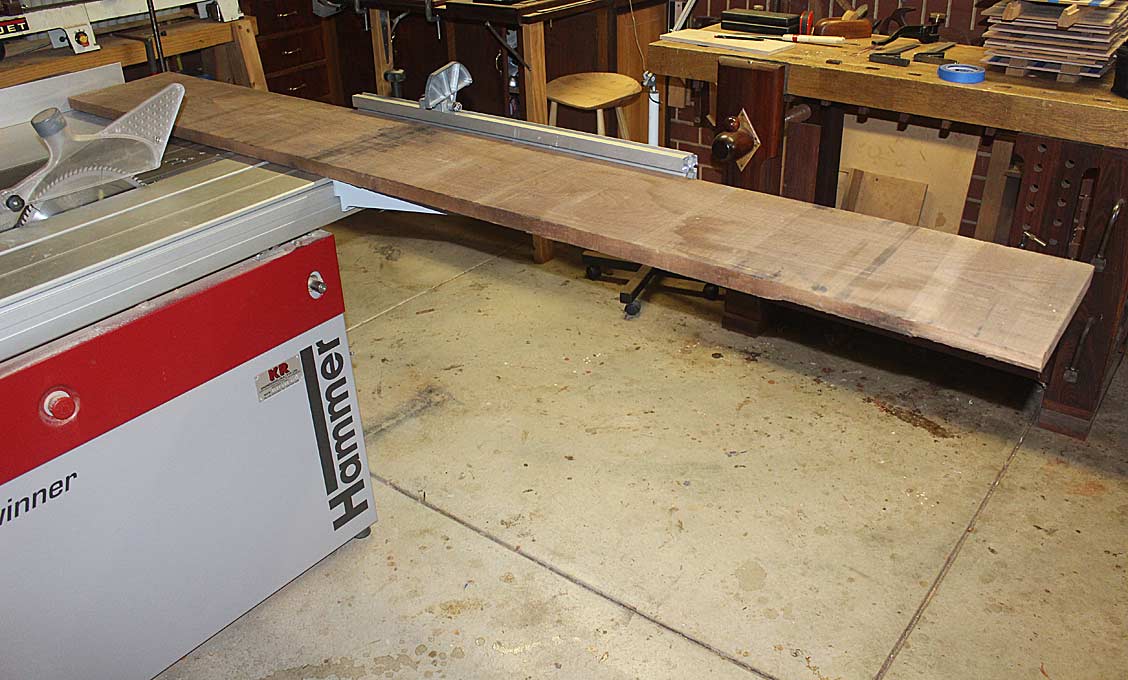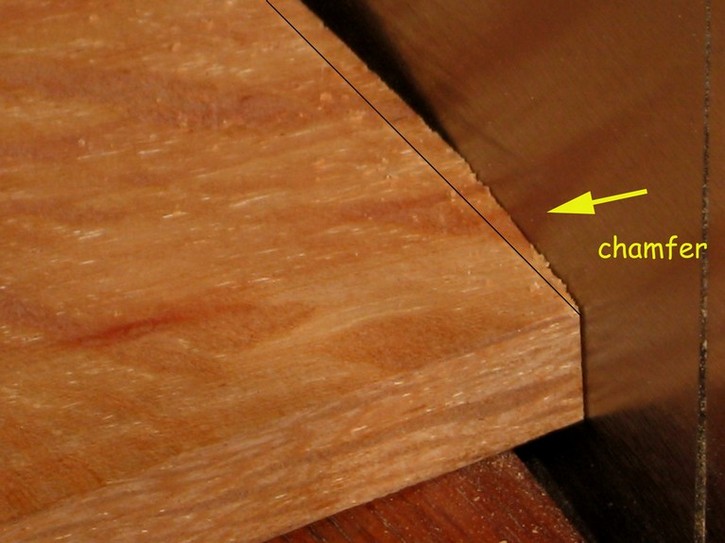weekend_woodworker
Established Member
Thanks for all the replies. I am clearly still going up the learning curve. I have been out in the garage this evening and I think there is probably an accumulation of minor errors. Firstly using two squares it seems the two surfaces are not perfectly co-planar. The first photo with the squares on the same surface was to confirm they were square and the second photo on the different surfaces shows a little gap.


The gap is probably only 1.5mm at about 150mm from the lower surface, so not a lot but a bit.
Next I lay the No. 7 on its side along the board to see if it made even contact all the way along. Again there is a very slight gap I can see at one point, but it is not much.


I was trying to show it better in the second photo, but it doesn't really come out well because it is very small. Finally I looked at whether the side and bottom of the plane were perpendicular. It depends exactly where I look along the length of the plane. Much of it looks okay, at one point it is marginally out.

I don't think I will win any prizes for my photography, but I think this looks okay.
I think the conclusion I have reached is that the two surfaces of the board are not quite coplanar so I perhaps could look at shimming it with some tape. I need to then use the lever to ensure the blade is absolutely square. Most importantly I probably need to develop my technique about how I hold the plane and apply pressure to both the plane and the wood I am trying to shoot.
Thanks for all the advice. I now need to practice some more and see what results I get if I get a chance at the weekend.
Cheers,
Mark


The gap is probably only 1.5mm at about 150mm from the lower surface, so not a lot but a bit.
Next I lay the No. 7 on its side along the board to see if it made even contact all the way along. Again there is a very slight gap I can see at one point, but it is not much.


I was trying to show it better in the second photo, but it doesn't really come out well because it is very small. Finally I looked at whether the side and bottom of the plane were perpendicular. It depends exactly where I look along the length of the plane. Much of it looks okay, at one point it is marginally out.

I don't think I will win any prizes for my photography, but I think this looks okay.
I think the conclusion I have reached is that the two surfaces of the board are not quite coplanar so I perhaps could look at shimming it with some tape. I need to then use the lever to ensure the blade is absolutely square. Most importantly I probably need to develop my technique about how I hold the plane and apply pressure to both the plane and the wood I am trying to shoot.
Thanks for all the advice. I now need to practice some more and see what results I get if I get a chance at the weekend.
Cheers,
Mark





